The UK population is projected to increase by 9.7 million over the next 25 years from an estimated 64.6 million in mid-2014 to 74.3 million in mid-2039. (ONS). Approx. 50% of the population increase is expected due to net migration.
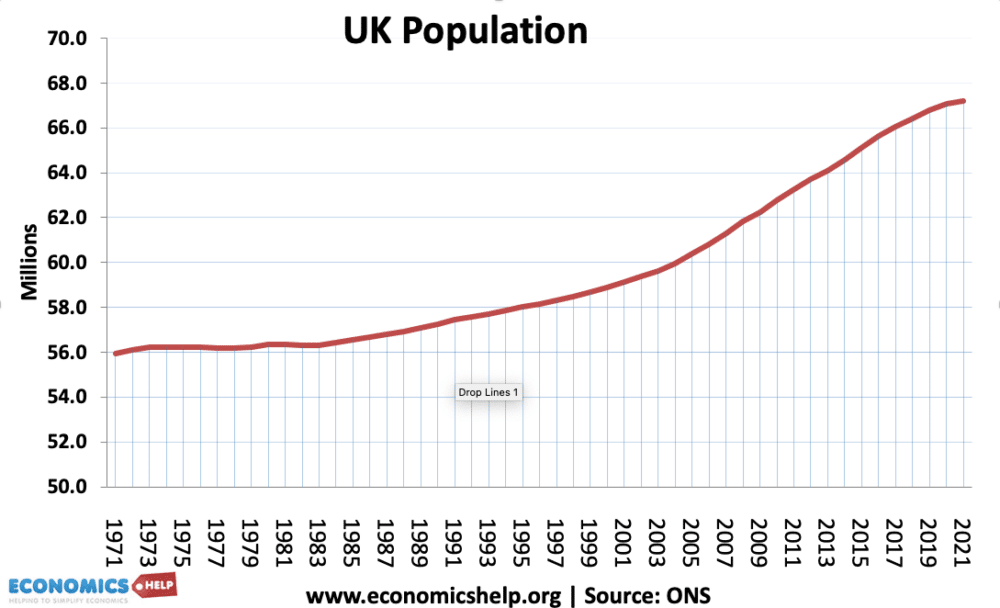
This is a look at the economic and social impact of a rise in the population.
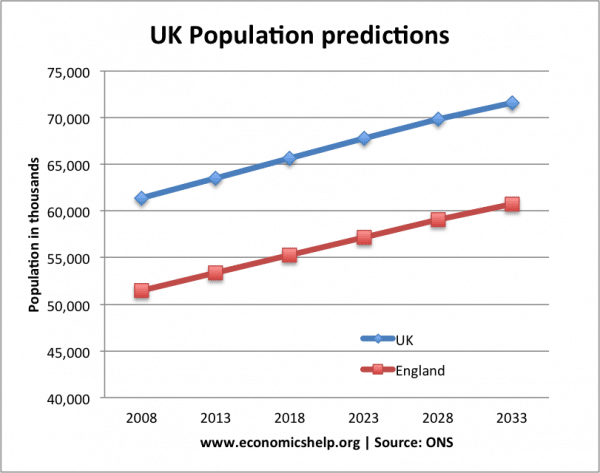
The UK is bucking the trend of many Western economies, such as Italy, France and Japan – who are seeing low birth rates, an ageing population and declining populations.
UK population projections at BBC
The growth of the UK population raises many issues, some positive and some negative. From an economic perspective, the population growth is generally good news. The growing population will increase the productive capacity of the economy, and help the UK avoid a demographic time bomb through improving tax revenues. However, a growing population will exacerbate existing problems, such as the long-standing housing crisis and a shortage of supply. It will also put pressure on existing infrastructure and the transport network. To deal with the rising population and congestion, we are likely to see increased building on greenbelt land and a change in the UK’s landscape.
On the one hand, population growth will help the UK economy become one of the largest in the EU, but as a consequence, we will have to deal with increased congestion and increased demand on local infrastructure.
Number of households
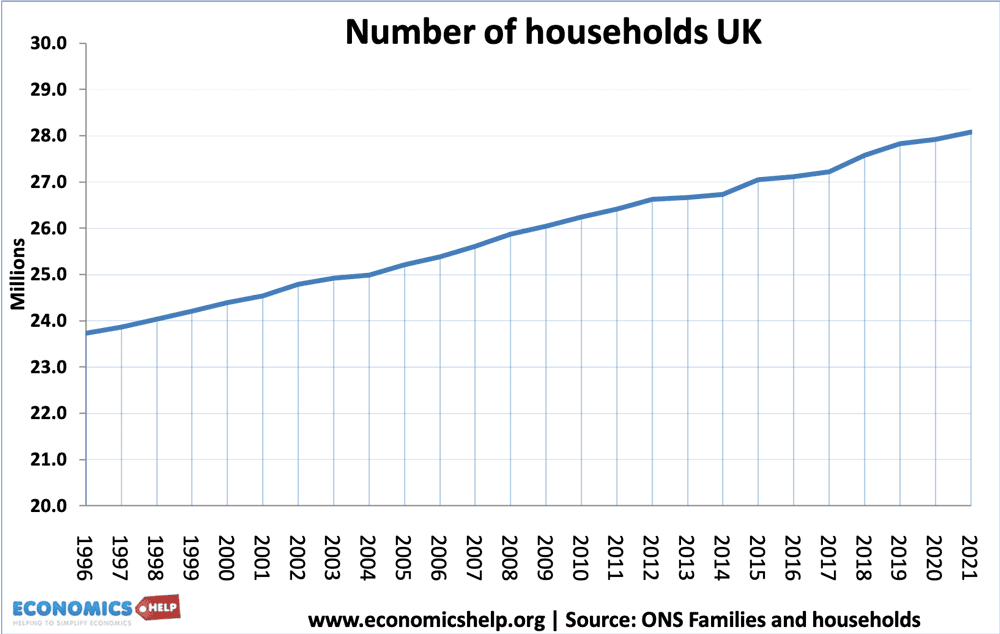
The number of households has been rising faster than population. 16% growth since 1996.
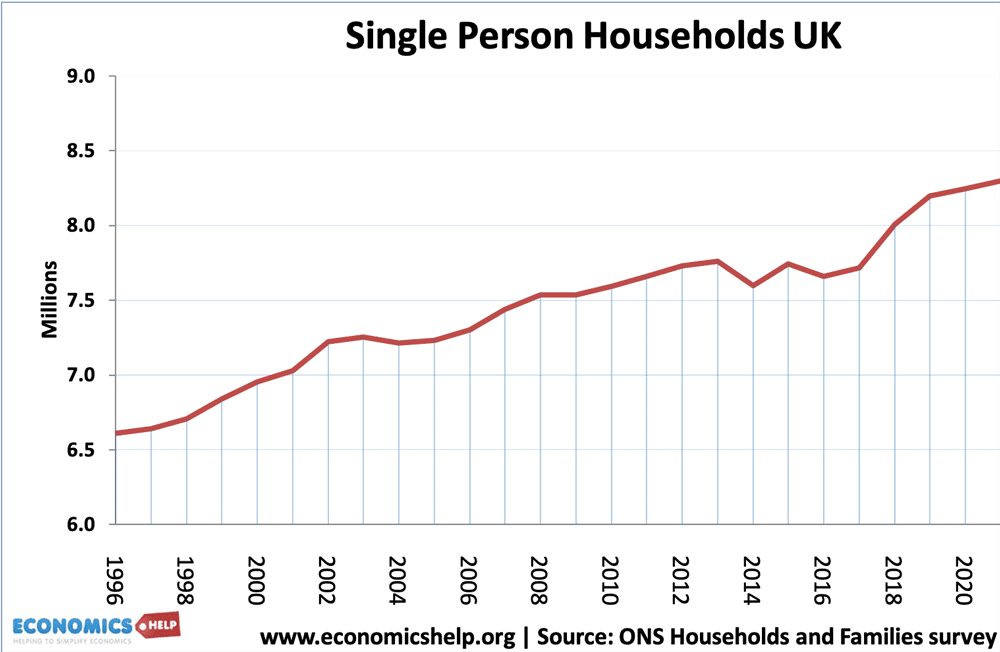
Housing
The UK is already struggling to meet existing demand for housing. A rising population will put even more pressure on housing; also, the rise in the number of households is greater than the rise in the population due to the growth of single occupancy households.
As mentioned in ‘housing crisis’, the UK already has a persistent shortage of housing. Demand is rising faster than our willingness to build. This shortfall is causing an increase in long-term house prices, reducing affordability. If the UK population continues to grow to 71 million plus it will, ceteris paribus put upward pressure on house prices. It will require a dramatic change in housing policy and could require large-scale new towns to catch up with the shortage.
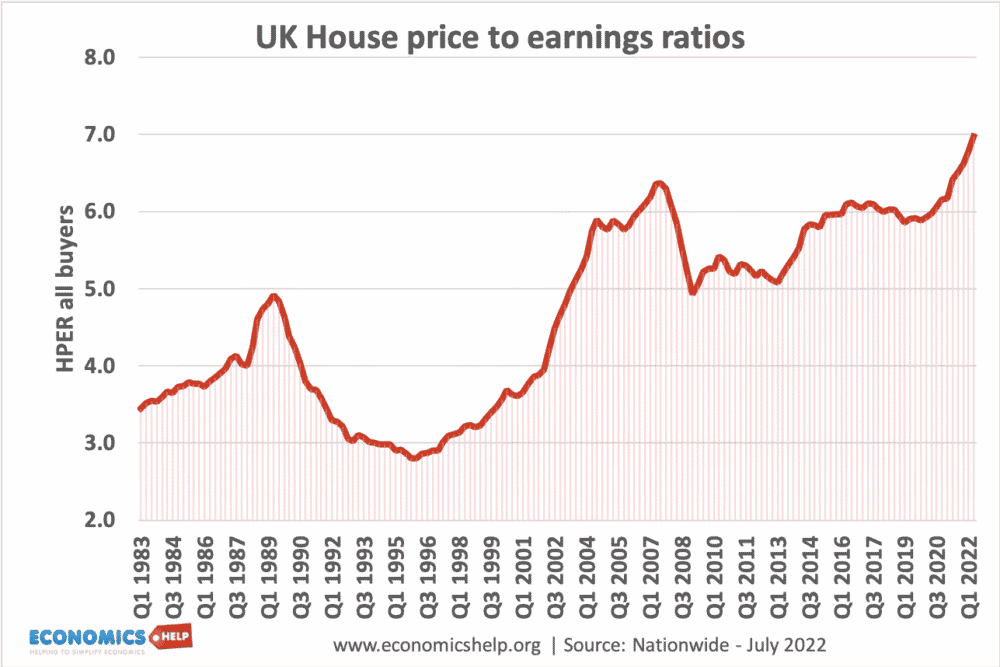
House price to earnings for first time buyers likely to keep rising.
If the supply of housing fails to meet the growth in the number of households, it will increase the cost of living. House prices will rise and the cost of renting will also continue to rise. This is likely to exacerbate the growth in wealth inequality we have seen in the past few years.
Arguably we could deal with the housing shortage if the political will is there. In the 1950s, we built 400,000 new homes a year. But, given the current resistance to even moderate new home building programmes, 300-400,000 new homes a year will be very difficult.
Limiting the impact of an ageing population
Many countries with declining populations are seeing a rise in the percentage of people over retirement age. This puts pressure on government spending (health and pensions) and leads to lower tax revenues (See: impact of an ageing population). The UK population is rising due to net migration and higher birth rates. This means the UK has a higher % of people of working age, who are net contributors to the exchequer (paying income tax, not receiving pensions)
Therefore the growth in the population improves the long-term UK budgetary position, reducing the need for spending cuts and/or tax increases.
The growth in the working age population also increases the size of the UK labour force, enabling higher productive capacity. This will help increase UK real GDP compared to other countries. (note, GDP per capita – GDP per head may not be affected by a growing population.)
However, by mid-2039, more than 1 in 12 of the population is projected to be aged 80 or over. (ONS)
Increased efficiency of greater population density
Increased population density is more efficient from both an environmental and economic perspective. The highest carbon per capita consumption comes from rural/low population density areas. There are economies of scale in providing transport and infrastructure which helps reduce the per capita impact on both government spending and the environment.
(Report: increased efficiency of higher urban density) (Study: efficiency of public services from higher density)
Reduced quality of life of greater population density
There are probably very few people who would prefer to live in an area of greater population density. Generally, people prefer quiet green fields to sitting in a traffic jam with millions of other people. With population growth, tourist hotspots will be increasingly crowded. If you fancy a visit to the Lake District, expect to share it with a greater crowd of people driving up a very congested M6.
Transport
Road congestion is already estimated to cost the UK economy up to £20 billion a year. A rising population, combined with increased use of cars, is likely to exacerbate this issue. As demand for travel increases, there are increasing difficulties in building new roads – often there isn’t space. The impact will either be increased congestion or it will require a major switch to alternative means of transport. Whilst there is a dislike of congestion, there is also great opposition to many new transport schemes such as HS2.
Economic growth and GDP per capita
Population growth magnifies economic growth. With a rising population, it helps to increase real GDP. However, in measuring average living standards, we need to look at GDP per capita. If we compare economic growth and economic growth per capita – we get a more pessimistic picture in the past few years.
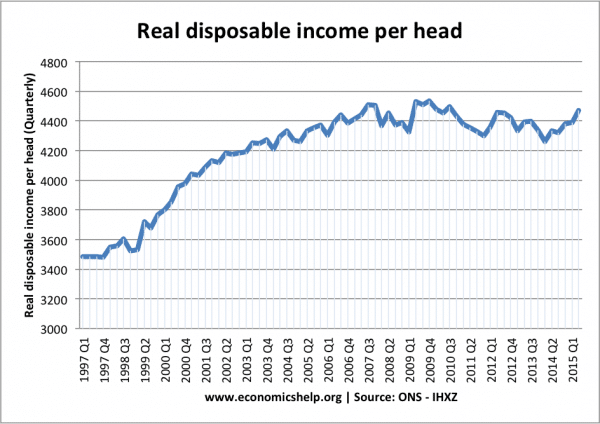
Economic growth vs Economic growth per capita
Labour Market
The UK labour market has come to rely on net migration to fill particular positions. It is estimated 26% of doctors in the NHS are from abroad (link). The building trade and agriculture are also reliant on net migration. Net migration allows the UK to attract workers in areas where there are labour shortages.
Some question whether met migration puts downward pressure on wages. A Bank of England found a rise in immigration had a tiny impact on overall wages – with a 10% increase in immigration – reducing wages by an insignificant 0.31%. However, the negative effect was greater for semi/unskilled workers in the service sector, with a 10% rise in immigration reducing wages the equivalent of 2%. B of E report. However, in an era of low real wage growth, net migration has become more controversial.
Lump of labour fallacy – the fallacy increased labour supply always pushes down wages.
Overall
Population growth is a sensitive issue. There are many fears about the impact of higher population levels on quality of life. There are reasonable concerns about the ability of housing and infrastructure to meet the growth in the population. However, it is not all bad news; increased population density can have economic benefits and enable a more efficient use of resources. However, given a choice between more efficient public services and more space – I guess most people would prefer lower population density.
Another issue is that it depends on how population growth is managed. If population growth is concentrated in areas (like the S.E.) and if there is a housing shortage in these areas, it will have adverse consequences. However, if the population growth can be absorbed across the country, the impact may be easier to accommodate. A rising population places greater emphasis on the need for good regional and housing policy.
Related

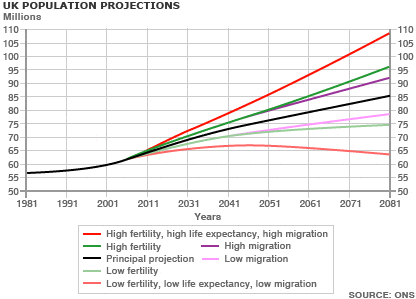
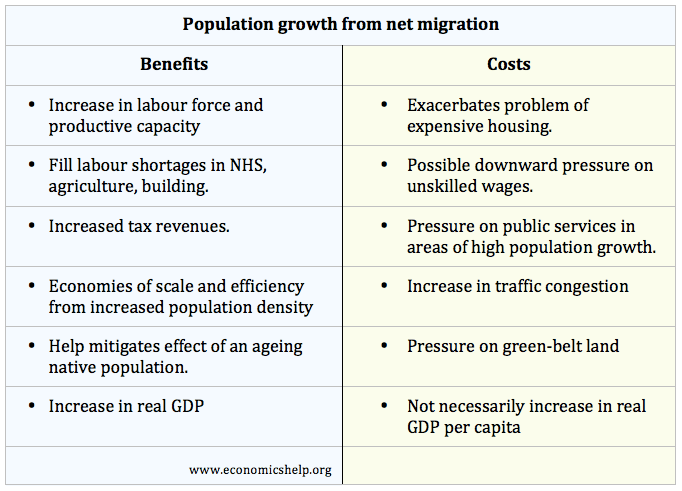
Typo in first line of article, you mean 2031….
Haha good one man! Really funny and well written
One economic indicator never lies.
Fecundity amongst women born in the UK is 1.64, that’s the population halving in a century.
50% of 2013’s births were to single mums who only make up 22% of mothers.
Hence the roughly 3/4s of mums who have permanent partners, have a fecundity rate approaching 1. That means the population of working 2 parent families will halving in a single generation.
The UK economy is an extinction machine and it’s us being exterminated.
I have no view on immigration, benefits, the EU, etc. I merely point out this uncomfortable fact as a counter to politicians claims of growth and prosperity in the UK.
Rather than take apart the ONS and BoE methodology for generating GDP, CPI, productivity, etc, one point will suffice. Ben Bernanke ignored GDP, CPI, etc, choosing to rely on the labour participation and wages growth.
At the moment, the UK public is only being presented the bad side of immigration and population change. I wonder at what point we will start talking about the threat to economic stability if we reduce immigration? After it’s already happened, presumably.
We appear to be facing a decision as to whether we choose growth via continuing immigration, or shrink the economy and close the doors.